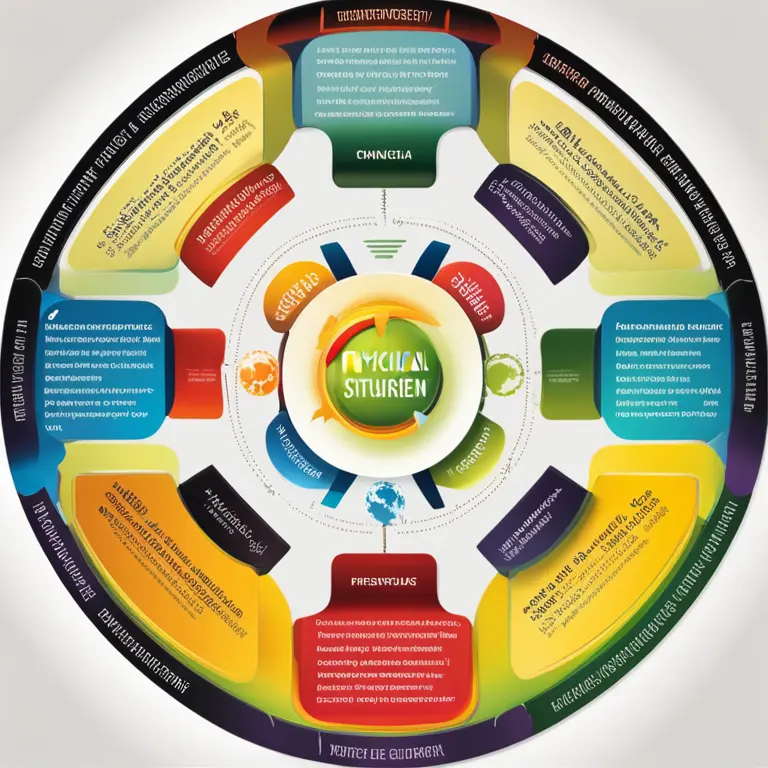
An Insight into Biorhythm Theory
Discover the fundamentals of biorhythm theory and how it purports to map personal energy cycles and their impact on various aspects of life.
article by Adrian Wallace
Introduction to Biorhythms
Biorhythm theory is a captivating concept that suggests our daily lives are influenced by natural physiological cycles. Stemming from the early 20th century, this theory proposes that human life is patterned through three primary cycles: physical, emotional, and intellectual. Each of these rhythms has a fixed duration, and understanding them is believed to help individuals optimize their activities in sync with these natural patterns. As we step further into 2024, biorhythms continue to intrigue those seeking deeper self-awareness and a holistic approach to well-being.

Physical Cycle: The Cornerstone of Vitality
The physical cycle, lasting 23 days, is thought to influence one's strength, endurance, and overall vitality. When the cycle is in its positive phase, individuals might feel at the peak of their physical prowess, whereas the negative phase may correspond to lower energy levels and a need for rest and recuperation. Monitoring this cycle is often advocated for planning strenuous activities or understanding periods of physical lethargy.

Emotional Cycle: The Waves of Sentiment
The emotional cycle spans 28 days and is linked to our mood, creativity, and emotional state. Riding on the highs of this cycle could enhance interpersonal relationships and artistic expression, while the lows might bring about a period of emotional introspection or volatility. With the growth of emotional well-being platforms in recent years, the emotional biorhythm is gaining attention from individuals looking to balance their feelings.

Intellectual Cycle: The Ebb and Flow of Cognition
A 33-day intellectual cycle rounds out the trinity, governing our reasoning abilities, decision-making skills, and cognitive functions. When it's at a high point, mental tasks might be less daunting, and learning new concepts could feel effortless. During a low intellectual cycle, it may be beneficial to engage in more reflective activities, rather than those requiring intense cerebral focus.

Biorhythms in Modern Life
The accessibility of technology has allowed a resurgence of interest in biorhythm theory, with apps and online tools offering personalized cycle charts based on birth dates. Forward-looking individuals and professionals use these tools to align their schedules with their biological rhythms, potentially enhancing productivity and personal fulfillment—though it is imperative to approach biorhythm readings with a level of practicality and informed skepticism.
Critique and Consideration
While biorhythms are alluring, scientific scrutiny questions their empirical foundation, and there's no consensus in the scientific community regarding their validity. Nonetheless, many people still find value in the concept as a self-reflective tool that encourages mindfulness about their patterns of well-being. Biorhythm theory, akin to many holistic approaches, falls into a realm where personal belief intersects with interpretative frameworks.
Conclusion: A Personal Journey
Biorhythm theory presents an interesting lens through which to view our lives, acting as a guide for some on when to push forward and when to retreat and recharge. Whether one subscribes fully to the rhythms or treats them as a philosophical exploration, this theory encourages a mindfulness that's often lost in the hustle of contemporary life. Moving beyond 2024, it endures as a captivating idea potentially offering insights into the harmony of our existence.
Published: 1/25/2024
Modified: 1/25/2024
More predictions
Come back here soon to learn more about yourself and your future


Biorhythm Love Compatibility: Find Your Match
Discover how a biorhythm love compatibility calculator can enhance your romantic connections by analyzing the natural cycles that influence relationships.


The Human Biorhythm Cycle: Patterns of Life's Ebb & Flow
Delve into the human biorhythm cycle, a compelling concept in the holistic understanding of our physiological and emotional patterns over time.


The Biorhythm Debate: Effective Insight or Myth?
Discover the realities behind biorhythms, how they're calculated, and their impact on daily life. Can these biological cycles truly predict our physical, emotional, and intellectual states?